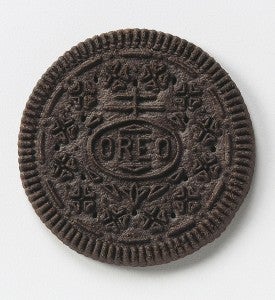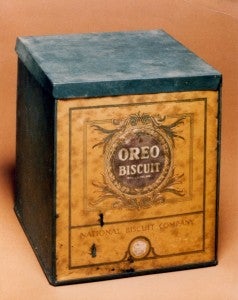 The same year the Titanic sank and a second party of explorers reached the South Pole, a grocer in New Jersey spent 30 cents a pound on packages of a new cream-filled chocolate sandwich cookie known as the Oreo.
The same year the Titanic sank and a second party of explorers reached the South Pole, a grocer in New Jersey spent 30 cents a pound on packages of a new cream-filled chocolate sandwich cookie known as the Oreo.
That first sale, made on March 6, 1912, marked the beginning of what would become a cultural icon — and touched off a century-old debate about the best way to eat them: Whole? Cream center first? Or dunked in a glass of milk? Today, cookie lovers in more than 100 countries can participate in that discussion, including consumers in Poland, Germany and India, where the Oreo was introduced for the first time just last year.
Oreos have managed to outlast any number of food trends — and even bested the product’s closest competitor, the Hydrox, which was actually introduced first, in 1908. So what has helped the Oreo remain popular? “For a product to stay relevant, it should address a basic need that doesn’t change over time,” says Wharton marketing professor Barbara Kahn. “Also, products that are classically styled rather than fashion forward are almost by definition more likely to become iconic. For example, Burberry’s traditional raincoat is a classic style that has reached iconic status; [same for] the VW Bug.”
Although the packaging has been modified, the distinctive design of the Oreo cookie hasn’t changed much since 1912. Over the years, different countries have put their own spin on the product — a green tea ice cream variety is available in China, for example, and blueberry ice cream Oreos are sold in Indonesia. And the product line in the U.S. has expanded more than once, including the introduction of the Double Stuf Oreo in 1974 and a trademarked brand of cookies and cream ice cream in 1983. Product owner Kraft Foods is selling a limited edition “birthday cake” flavor to mark the cookie’s anniversary.
 But Wharton marketing professor J. Wesley Hutchinson wonders if Oreos are part of a dying breed. “There are fewer and fewer ‘cash cow’ multigenerational products,” he notes. “Kellogg’s Corn Flakes, along with Post Grape-Nuts and General Mills’ Cheerios are the archetypes. They satisfied a basic but modern human need and use excellent brand management to maintain their positioning in a competitive market.”
But Wharton marketing professor J. Wesley Hutchinson wonders if Oreos are part of a dying breed. “There are fewer and fewer ‘cash cow’ multigenerational products,” he notes. “Kellogg’s Corn Flakes, along with Post Grape-Nuts and General Mills’ Cheerios are the archetypes. They satisfied a basic but modern human need and use excellent brand management to maintain their positioning in a competitive market.”
Kahn also acknowledges that successfully introducing a product that appeals to a broad audience is tough in today’s crowded marketplace. “But if a product really hits the right note, it can become a classic overnight — think of Apple’s white earbuds,” she says.
As for the Oreo, Kahn thinks the “consumption traditions” that grew around it have helped the product stick around for so long. (According to Kraft, Oreo eaters are split down the middle on the issue of whether to eat the cookie whole or to pull it apart, although women “twist” more often than men.)
And Hutchinson adds that one part of the Oreo’s winning strategy is pretty simple: “Have you ever had an Oreo and milk?” he asks. “‘Nuff said.”



